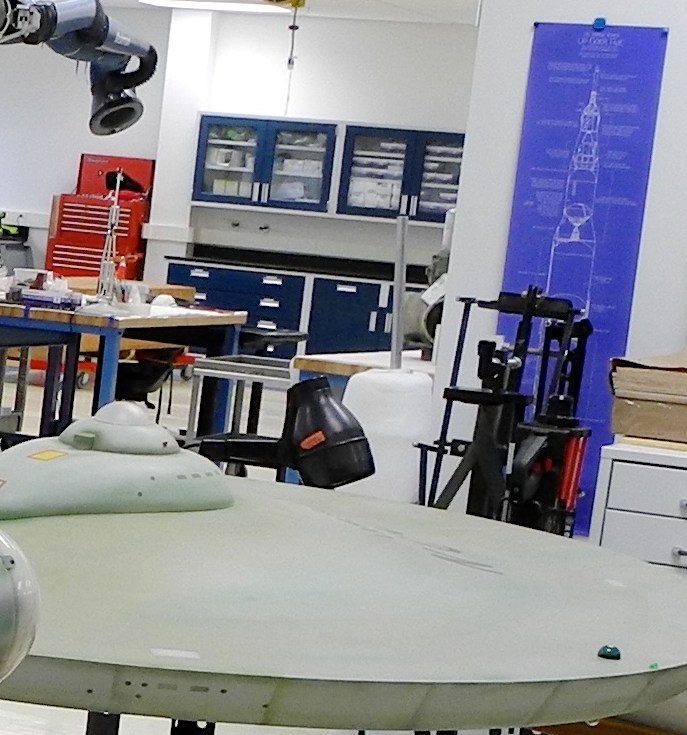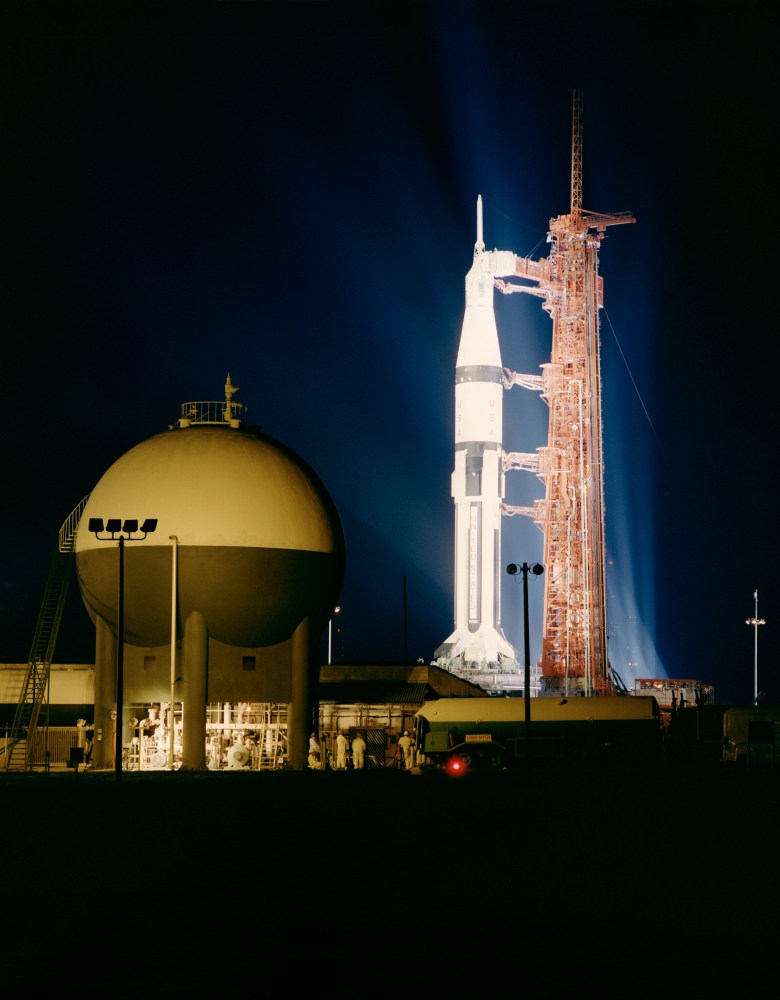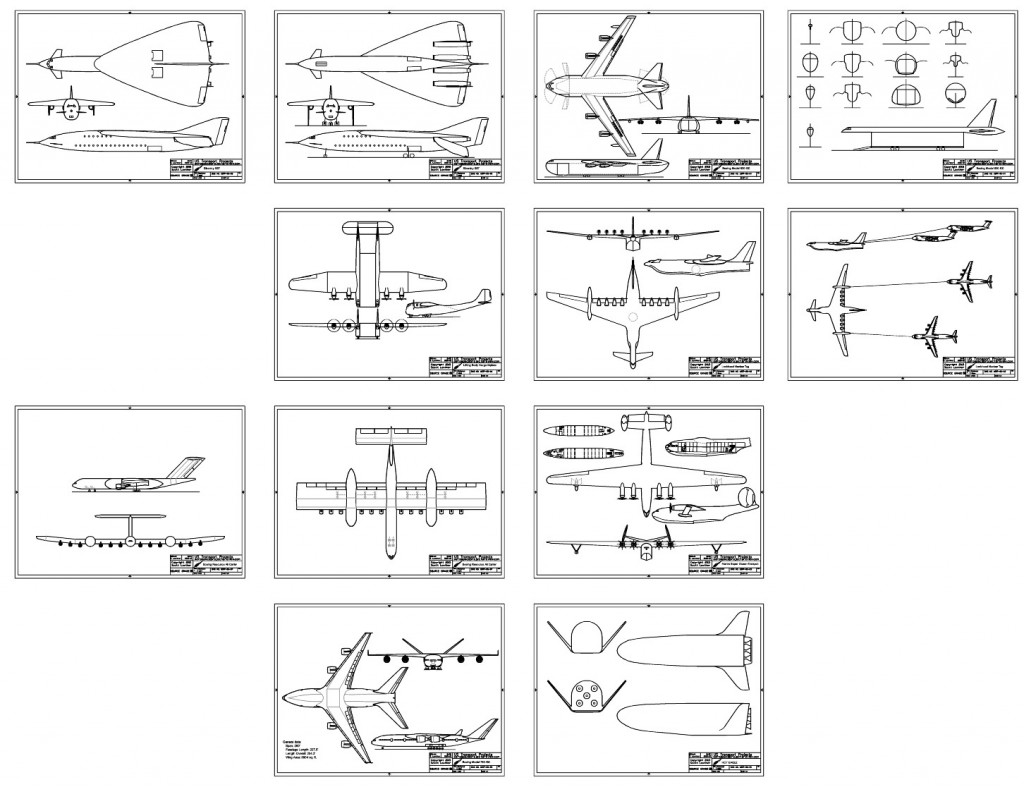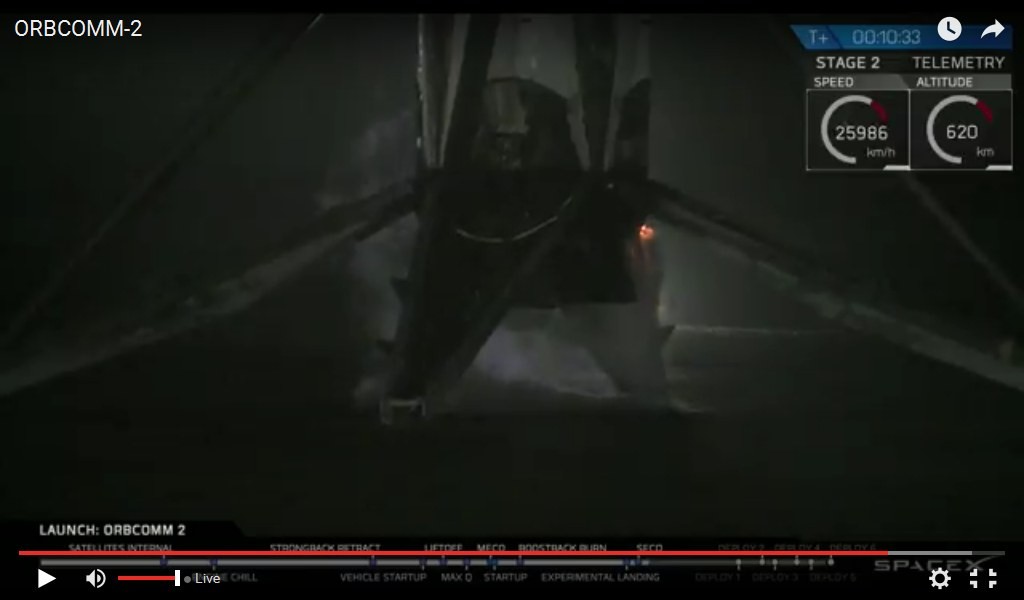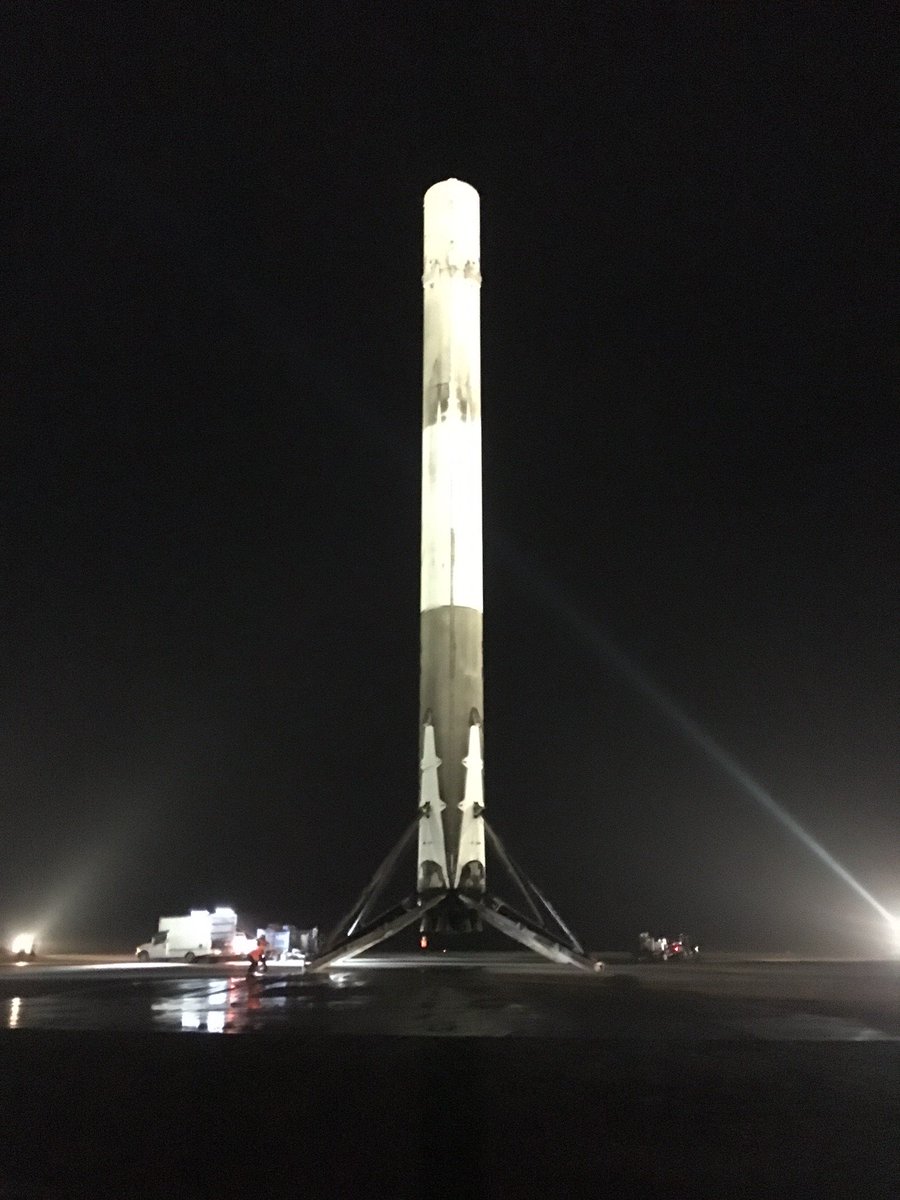Years ago I bought a Saturn V blueprint off ebay. I then scanned it and sold it on my site. One buyer was Randall Munroe of XKCD,who used it as a basis for his “Up Goer Five.” I suggested to him that he should sell large prints of the UG5, which he did (I imagine I was hardly the only one to suggest this to him). Someone bought one of these prints and stuck it up in a restoration facility at the Smithsonian Air & Space Museum’s Stephen F. Udvar-Hazy Center, where it was photographed in the background during the restoration of the original starship Enterprise filming model. See here:
Star Trek NCC-1701 Studio Model Restoration in 2015
So, yeah, it’s a stretch to lay claim to any value here… but whatever there may be I’ll take.

